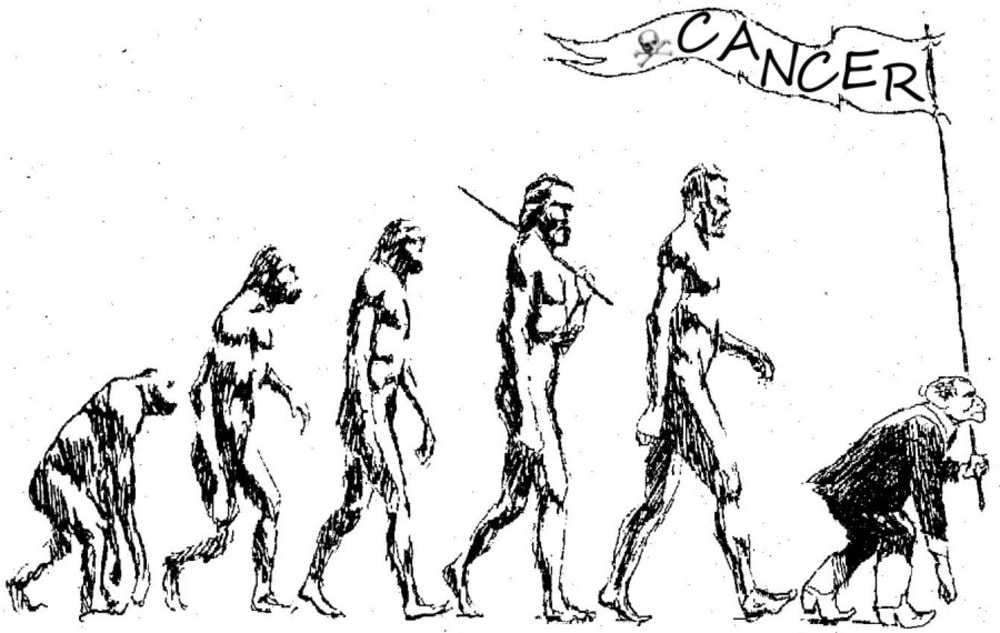To date, no complete cure for cancer exists, despite enormous sources of funding. I hereby propose that an alternative conceptual approach on how to understand cancer may help to design new strategies that may be more effective and successful in its treatment.
This is based on new evidence that points that cancerous cells, according to my theory, behave like a bacterial infection. This idea was born on the realization that many bioactive compounds, for example, the ones made by marine cyanobacteria, are toxic only for cancerous cells. Of course, cyanobacteria are not making anticancer compounds for our benefit. They are making it (among others) as a way to communicate with other species of the microbial community where they live, either for positive or negative interactions.
Why a cyanobacterial compounds should kill cancerous cells and also be selective only for them and not for normal cells may be explained if one takes into consideration that when normal cells turn cancerous they take a "somatic atavism" path were they come back to the metabolism and growing strategies of their evolutionary ancestors, prokaryotic cells. Thus, after cancerous cells "turn prokaryot" are then able to be affected (recognized) by the compounds made by cyanobacteria.
This could explain why a near-universal property of primary and metastatic cancers is the upregulation of glycolysis, which is a much less efficient, but the main energy generation strategy used by prokaryotes.
This approach may also explain the bacterial infection-inflammation–cancer connection: That is, microbial infections which cause chronic inflammation may predispose to cancer, (e.g. Helicobacter pilori for gastric cancer and mucosal lymphoma).
Also, my approach explain why recent successful immunological strategies work, where the immune system of a patient is used for creating in vitro “cancer vaccines” in order to prime the immune system against cancerous cells once back in the patient.
As expected in the frame of this theory, cancerous cells behave like a bacteria would do, becoming tolerant to chemotherapy (ovarian cancer i.e), and also appear after antibiotic overuse, which has been associated with increased risks of breast cancer.
There is even a form of a "transmissible" cancer, the Tasmanian Devil facial tumor disease.
Interestingly, this approach may explain why several antibiotics are now proving to be effective against different forms of cancers; Griseofulvin, an antifungal drug that causes apoptosis in HeLa, U2OS, and MCF7 cells but not in normal cells, Nitroxoline, an antibiotic commonly used to treat urinary tract infections that slows or stop the growth of human breast and bladder cancer cells (by blocking angiogenesis), and Olivomycin A, which is toxic for breast, colon and ovarian adenocarcinomas.
Thus, with this approach it may be understood that there are as many types of cancers as there are many types of bacteria, which suggest that a different "bacterial like" approach should be use for each type of cancer.
Thus, if cancer is seen as "bacterial” form of us, a “bacterial human” population of cells which invades us in response to stress, new molecular strategies can be envisioned.
Like this entry?
-
About the Entrant
- Name:Armando Azua-bustos
- Type of entry:individual
- Patent status:none

